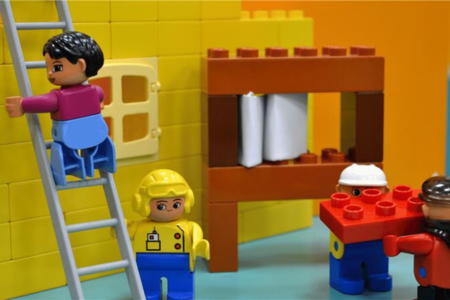Let me start with a question, how would you describe your name shortly ? I cannot imagine the scenario where your short description of the name matches with multiple people and who to recognize for. A good description goes a long way – no pun intended. Whether it makes sense for everyone is a whole another matter. This is much more important in the field of engineering. For example, metric vs. imperial: a battle for the ages.
Let’s cut right to the chase. Standardized part descriptions in the engineering industry are the universal language that helps everyone understand what they’re talking about. Imagine if every engineer had a unique way of describing a simple screw or a bolt. Chaos, right? I mean, more chaos than it already is.
Having standardized part descriptions is like having a common language that everyone can interact with. A ‘Lingua Franca’, if you will. It makes communication clearer and more efficient, especially in a global industry where people from different backgrounds and countries work together. Think of it as the blueprint for avoiding confusion and mistakes in designs, manufacturing, and procurement. It ensures that whichever country you are from or whatever language you speak, an “M6 x 20 Hex Bolt” means the same thing. Let’s not involve grade and length now.
But why does it matter to have standardized descriptions for items across the world? What does that bring to the table? For starters, without standard descriptions, people might use different terms to refer to the same thing. Imagine one person calling it a “mobile” and another calling it a “smart chip”. Both are correct, but neither can understand the other person without some additional insight.
I’m sure you’ve seen the game where someone draws something on a whiteboard and others try to guess what it is. What looks like a tiger to you may look like a cat to someone else. They’re both cats, but you get the idea, right? Even with all sorts of standards and documentation in place, there are still miscommunications, errors in design and supply chain nightmares. The list goes on…
All this results in so much wasted time, effort, inconsistencies, and inefficiencies. Just imagine the compliance and regulation issues one might face. There are so many documentation issues, which are simply nightmare fuel. My throat goes dry just thinking about it. Global collaboration is another major issue in today’s world. Creating a manual that works is already a momentous task. Now you must create several manuals to cater to people from several parts of the world. All that time and money could be put into something far more important, like Taco Tuesday.
Standardized part descriptions are like the glue that holds the engineering world together, making everything smoother, more efficient, and less prone to chaos. Like salt, whose presence in the right amount goes unnoticed but either more or less spoils the flavour overall.
Plus, it helps with things like quality control and compliance. If a certain part is needed to meet certain safety standards or performance requirements, having a standardized description ensures that everyone is on the same page.
In a nutshell, it’s all about making sure that engineers and other professionals can communicate effectively, avoid mix-ups, and build stuff that works like a charm. A fever dream, indeed!

Karthik S is our in-house Master Data Quality Manager certified by ISO-8000 for Data Quality and Enterprise Master Data. He comes with 10+ years of experience with prior experience in handling customer, asset & engineering data, improving data quality & accessibility, eliminating data loss and standardizing data to match industry standards.




